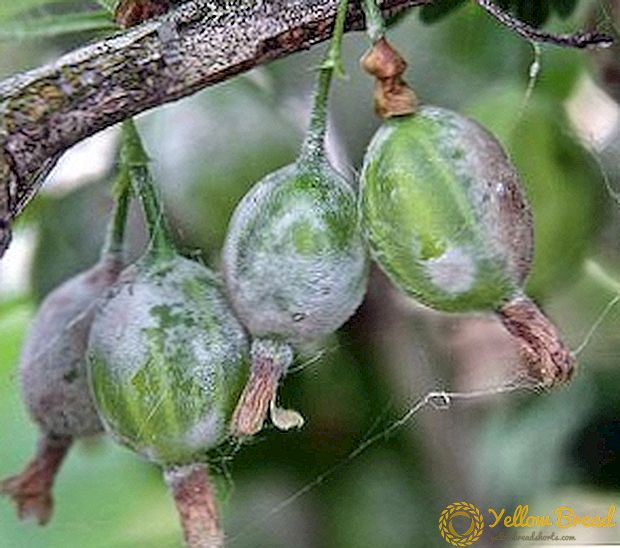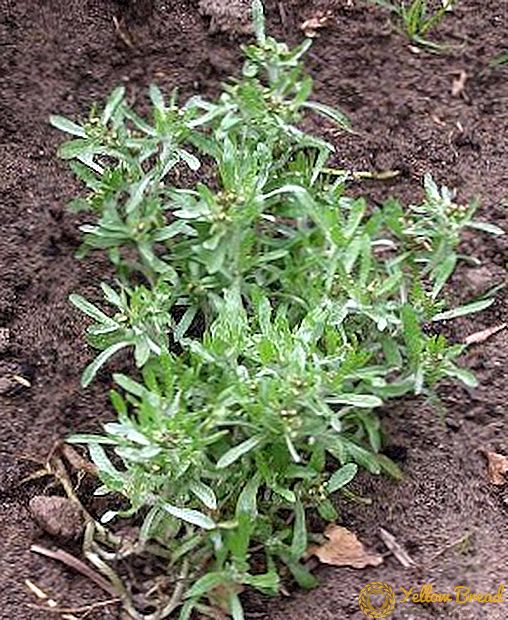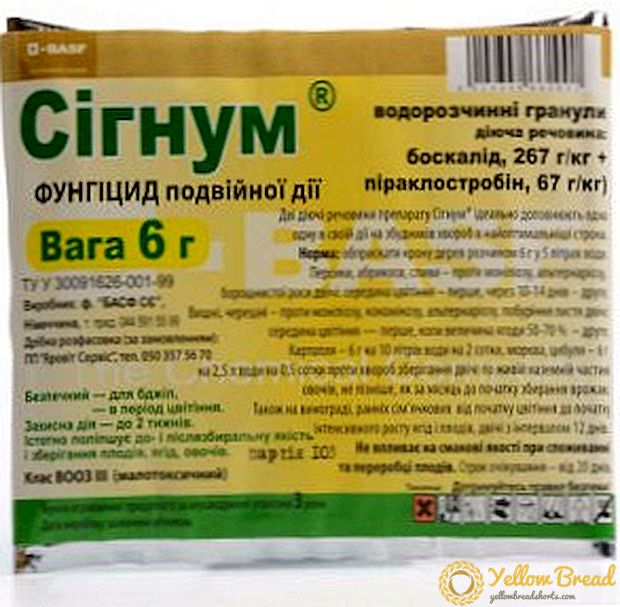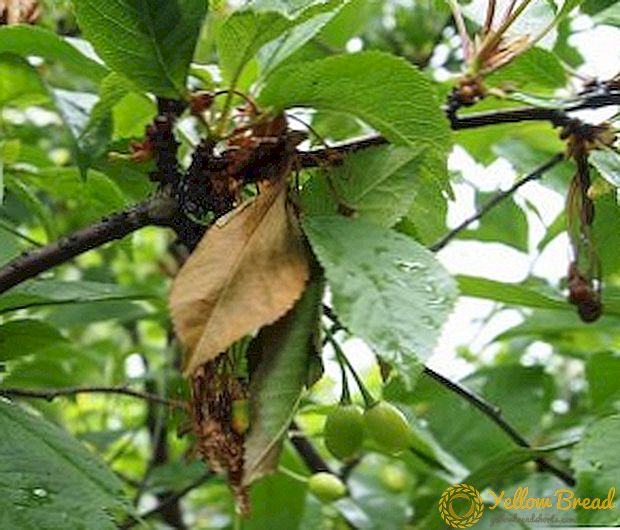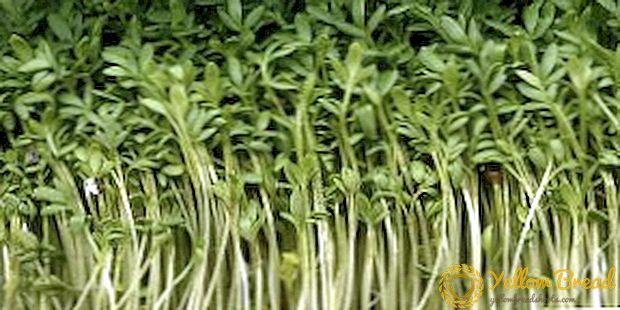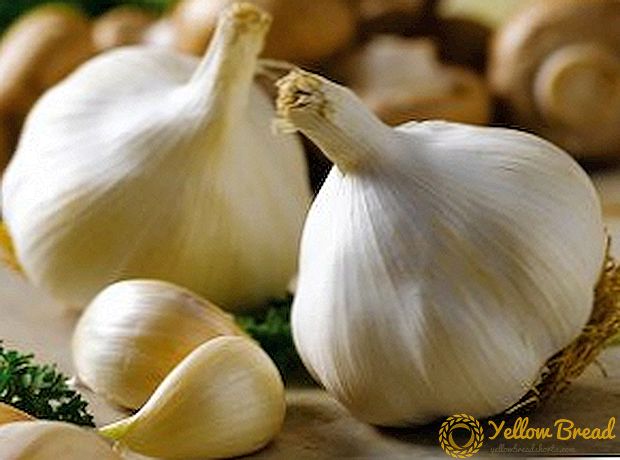 Among the many modern fertilizers, perlite and vermiculite are not in last place in the indoor floriculture. Not long ago, few people knew about the possibility of using these materials for these purposes, but today you can easily buy them at any flower shop.
Among the many modern fertilizers, perlite and vermiculite are not in last place in the indoor floriculture. Not long ago, few people knew about the possibility of using these materials for these purposes, but today you can easily buy them at any flower shop.
Despite the fact that perlite and vermiculite for plants are very similar, the difference is still there, and now we will find out which one.
- What is perlite
- What is vermiculite
- What is the difference between perlite and vermiculite
What is perlite
 Before proceeding to the comparison of perlite and vermiculite, consider each of the materials separately.
Before proceeding to the comparison of perlite and vermiculite, consider each of the materials separately.
Perlite is a rock of volcanic origin and is considered a very useful mineral.
At the moment of contact of lava with the surface of the earth, or more correctly, immediately after its cooling, a mineral called obsidian is formed, which is later hydrated by groundwater. The resulting obsidian hydroxide is perlite.
This material has found the widest distribution in the construction industry, where it is used for sound and heat insulation, as well as fire hazard reduction.Often before the direct application of perlite passes heat treatment in special ovens, where under the influence of high temperatures, it swells (like popcorn).
As a result, we get agroperlite, presented in the form of a homogeneous bulk material. In agriculture, it is most often used for soil mulching, but in room gardening it turned out to be an excellent alternative to the use of sand.
What does pearlite look like for flowers? In fact, it is not difficult to describe it, because the expanded perlite, like the vermiculite described later, is really very similar to ordinary sand. The chemical composition of perlite is almost identical to sand, since it is based on silicon oxide (IV).
 It is no secret that the preparation of many soil mixtures does not cost without the participation of sand, because its presence in the soil provides good breathability. This means that when growing plants with a weak root system, which include indoor flowers, you will have much less problems.
It is no secret that the preparation of many soil mixtures does not cost without the participation of sand, because its presence in the soil provides good breathability. This means that when growing plants with a weak root system, which include indoor flowers, you will have much less problems.
Perlite is a natural alternative to this sand, since it is chemically inert and not moisture-consuming material, which means that its main function is to loosen the soil, but no more. With the use of this material, you will disappear the problem of the formation of a crust in the upper part of the soil, which often appears as a result of earth tracking (simply sprinkle perlite on the surface of the soil). 
Among the disadvantages of this sand substitute are a low positive charge, due to which the material is not capable of binding and accumulating chemical elements from the ground, although most often this is not required.
It cannot be said that plants with a more powerful root system live well in dense and clogged earth, but the amount of the described material in the substrate can be safely reduced.
 Perlite is excellent for rooting cuttings, and germination is possible even in its pure form.
Perlite is excellent for rooting cuttings, and germination is possible even in its pure form.
However, in most cases, growers use a mixture of perlite with peat or sphagnum.
In addition, it is often used for germinating seeds, because when mixed, it contributes to their more uniform distribution over the soil. Possible additional powdering of seeds with this material.
When water rooting cuttings perlite helps to avoid their rotting, and when grown in pearlite seedlings of flower and vegetable crops, fungal diseases (for example, blackleg) are much less common.
What is vermiculite
 Vermiculite is a mineral belonging to the group of hydromicas. This is an environmentally friendly (almost sterile) material that does not contain heavy or toxic substances. It should also be noted that it is not susceptible to decomposition or rotting (which is often caused by exposure to microorganisms) and is not a favorable environment for rodents and insects.
Vermiculite is a mineral belonging to the group of hydromicas. This is an environmentally friendly (almost sterile) material that does not contain heavy or toxic substances. It should also be noted that it is not susceptible to decomposition or rotting (which is often caused by exposure to microorganisms) and is not a favorable environment for rodents and insects.
On the outer side, vermiculite is a material from which commodity vermiculite is obtained as a result, which is represented by a light gray ore and intermittent coarse fractions of pure mica. Its large, medium and even small fractions are multi-layered material that remains suitable for a variety of mixtures.
Small fractions of ore are similar to dust or sand, but in general it can be called a storehouse of chemical elements, of which with time (subject to the presence of particular geographical conditions) lamellar crystals of mica are formed.
The ore is processed at the processing plants where pure native mica is collected, and then sorted and shipped for use in the electrical industry. The remaining material is sent for further hydrothermal treatment in a conveyor oven (heated to 1400 degrees Fahrenheit).
As a result, the ore fractions swell and stratify, turning into various figures that look like vermicelli. In the future, all the resulting mass is crushed and becomes more like flakes of various sizes: from dust to the size of coins.
Obtained by firing vermiculite, which has the name agrovermiculite, - porous, light and bulk material, with irregular flakes. It contains many trace elements useful for plants, among which are magnesium, calcium, aluminum, potassium, iron and silicon.  It should be noted that the difference between perlite and vermiculite is precisely the presence of trace elements in the latter. Nevertheless, most of these particles are in inaccessible form, because of which vermiculite cannot be considered as the main supplier of all necessary nutrients for plants.
It should be noted that the difference between perlite and vermiculite is precisely the presence of trace elements in the latter. Nevertheless, most of these particles are in inaccessible form, because of which vermiculite cannot be considered as the main supplier of all necessary nutrients for plants.
The high ion-exchange capacity of vermiculite allows it to retain positively charged ions of magnesium, potassium, and other fertilizer elements introduced into the soil, and gradually release them to the plants.
The described material is different and sufficiently large moisture capacity, since when wet, it holds a weight of five times its own.
 Vermiculite perfectly protects the root system of plants from temperature changes, which is very important when growing seedlings, and since it is sterile, it does not contain microorganisms and fungi, it is also characterized by the ability to prevent the appearance of rot and fungal diseases. The cuttings placed in the agro vermiculite root well and allow offspring.
Vermiculite perfectly protects the root system of plants from temperature changes, which is very important when growing seedlings, and since it is sterile, it does not contain microorganisms and fungi, it is also characterized by the ability to prevent the appearance of rot and fungal diseases. The cuttings placed in the agro vermiculite root well and allow offspring.This feature made the material an ideal component of earth mixtures in various proportions (up to 50% of the land substrate), and the friability,soil porosity and moisture always return to normal.
Due to the neutral acidity (pH), vermiculite significantly reduces the acidity of the land substrate and slows down the process of its salinization.
The positive properties of the material are manifested during the winter storage of bulbous plants, because the low thermal conductivity of the material allows it to maintain heat balance around the bulbs, while maintaining normal gas exchange. The bulbs placed in the material will not rot, and they will not be affected by a fungal infection.
What is the difference between perlite and vermiculite
 Having examined perlite and vermiculite in detail and familiarized with their composition and properties, some general nuances can be noted (for example, when using both materials the soil mixture will not follow, and a crust does not form on the surface of the substrate), but this does not mean that they are completely identical. .
Having examined perlite and vermiculite in detail and familiarized with their composition and properties, some general nuances can be noted (for example, when using both materials the soil mixture will not follow, and a crust does not form on the surface of the substrate), but this does not mean that they are completely identical. .
Studying the characteristics of perlite and vermiculite and deciding what is best for your colors, first of all, you should pay attention to the main differences: the darker color of vermiculite and its ability to accumulate and slowly release minerals and water. That is why, giving preference to this material, watering plants will need to be reduced.
At the same time, perlite is much faster to part with the liquid, which means that the frequency of its introduction into the soil, on the contrary, increase.
Both materials are of volcanic origin, only perlite - it's just melted and foamed sand (glass can be said), but vermiculite also contains certain mineral supplements.
If you need to root the cuttings, it is best to give preference to vermiculite. It provides less shrinkage during grinding (less caking), does not form voids when backfilled and has low abrasive properties (does not have a detrimental mechanical effect on the roots).
Also in comparison with perlite, vermiculite is characterized by a lower hygroscopicity and a lower ionic ability. However, the advantages of perlite also cannot be ignored, since it provides capillary distribution of moisture, it gives off much more easily and dries faster between irrigations.
 Both perlite and vermiculite have quite positive features, which makes them a good substrate for indoor flowers, but only by understanding what the difference between them is, you can make the right choice in each individual situation.
Both perlite and vermiculite have quite positive features, which makes them a good substrate for indoor flowers, but only by understanding what the difference between them is, you can make the right choice in each individual situation.

